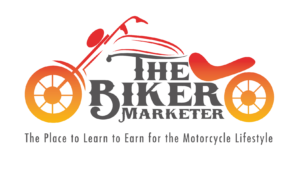Choosing the Right Affiliate Programs
Understanding Your Audience
When you’re picking affiliate programs, the most crucial step is getting to know your audience. Are they beginners just diving into biking, or are they seasoned riders looking for high-end gear? Understanding their needs allows you to select programs that truly resonate with them.
Consider creating reader personas that represent different segments of your audience. This can help guide your choice in the types of products or services you affiliate for. Do your readers prefer casual rides or do they often hit the trails and need durable gear? Tailoring your content and affiliate choices to these insights will elevate your blog’s relevance.
Also, keep engagement in mind. You want programs that encourage interaction and provide value. This could be anything from high-quality motorcycle gear to riding courses. The more you can match your offerings to their interests, the higher the conversion rate you’ll see.
Researching Affiliate Networks
Once you’ve got your audience locked down, it’s time to research affiliate networks. There are tons of platforms out there like Amazon Associates, ShareASale, or CJ Affiliate that offer a wide variety of options. You can start small and pick a few niche-specific programs that align with what your audience desires.
Consider looking for networks that specifically cater to motorcyclists or outdoor adventure enthusiasts. These focused networks often provide better commissions and products that fit seamlessly into your content. I’ve noticed that when I partner with programs that specialize in motorcycle gear, my audience responds much more positively.
Take your time to read reviews from other bloggers about these networks. Some may have hidden fees or might not provide the level of support you’ll need as a newbie in affiliate marketing. Finding a good fit for both you and your readers is key for long-term success.
Evaluating Commission Structures
Next up, delve into the commission structures of potential programs. Are they offering a flat rate, a percentage of the sale, or even tiered commissions that reward you the more you sell? Understanding how you’ll get paid is essential.
For instance, if you’re promoting more expensive items like motorcycles or high-end gear, a percentage of the sale might work well for you. But for lower-ticket items, try to find programs with high flat commissions that can make a difference.
Also, pay attention to the payment methods and thresholds. Some programs pay out only when you hit a specific earnings amount. You want to make sure you won’t be left waiting forever to reap the benefits of your hard work.
Creating Valuable Blog Content
Writing Natural Product Reviews
Now that you’ve selected your affiliate programs, let’s talk content. One of the best ways to integrate affiliate links organically is through product reviews. Focus on creating genuine and informative reviews that reflect your personal experience. Readers appreciate honesty, and building trust will pay off.
Write about the pros and cons of the products you use. If you didn’t like something, say it! This creates authenticity and credibility, which can lead to higher conversion rates. Be sure to include affiliate links in these reviews, directing your readers to make purchases easily.
Also, remember to include images and demonstrations when possible. Visuals can greatly enhance your articles and help your audience imagine using these products, making them much more likely to click on your links.
Providing Helpful How-To Guides
Besides product reviews, offering helpful how-to guides can be a goldmine for affiliate links. Think about common problems bikers face or skills they want to learn. Start drafting articles that address these needs while recommending relevant gear or services.
For instance, if you’re writing about how to maintain a motorcycle, you could mention specific tools or parts linked to affiliate programs. This way, you’re not just selling but providing real value to your readers, which they’ll appreciate.
Also, be sure to utilize SEO strategies when writing these guides. The better visibility you have, the more traffic will flow to your blog. Use keywords that bikers are searching for to increase your chances of being discovered in search engines.
Engaging with Your Community
Don’t forget to engage with your readers! This interaction can create a loyal following that is more likely to trust your recommendations. Responding to comments on your blog, answering questions, and encouraging discussions can help build this community feel.
Consider crafting email newsletters to share updates on your latest blog posts and include product links. Share personal anecdotes or tips in these newsletters to strengthen that connection. People love to feel like they’re part of a larger community.
Social media is also a great platform to get feedback and start conversations. Whether it’s sharing photos from your rides or posting polls about gear, the more you interact, the more your audience will feel invested in what you’re sharing. This, in turn, can lead to higher engagement and more affiliate sales.
Analyzing Your Performance
Tracking Clicks and Sales
Now, we want to ensure that what we’re doing is working. Most affiliate programs provide tracking tools to see how clicks and sales are performing. Familiarize yourself with these tools; they’re invaluable for understanding what’s resonating with your audience.
By tracking where your clicks are coming from, you can adjust your strategy accordingly. Are your product reviews driving more traffic than how-to guides? Take note and focus more on the formats that yield better results.
Use this data to refine your content strategy over time. Knowing what works allows you to both boost your influencer power and maximize your earnings.

Experimenting with Different Strategies
Don’t be afraid to trial different approaches! Maybe you want to send out an email blast featuring a particular product. Or, perhaps, run a special promotion with a specific affiliate partner. Track these efforts to see how they perform in comparison to your regular posts.
Sometimes, mixing it up can bring fresh traffic or help you figure out what your audience really loves. Just be willing to change if something isn’t working. Flexibility is a must in this gig!
Document your successes and failures so you can keep learning and improving your approach. The more data points you have, the smarter your decisions will become.
Refining Your Content based on Feedback
Lastly, always be ready to take constructive criticism. Read through comments and pay attention to what your readers are saying about your content and recommendations. If you notice recurring themes or requests, consider how to adjust your approach.
It might be that your audience is asking for more detailed guides on specific motorcycle models or craving more personal stories about your biking experiences. Listening and adapting is key to running a successful blog.
Remember, your blog should be a journey alongside your readers. The better you cater to their needs, the more they’ll trust your recommendations and stick around for the long haul!
Building Trust and Credibility
Being Authentic and Transparent
Trust is everything in affiliate marketing. I can’t stress enough the importance of being upfront about your affiliate relationships with your audience. Letting them know that you earn a commission if they purchase through your links helps build that trust.
Please, don’t hide your affiliate links; instead, be proud of them. Share that you’re promoting products you genuinely believe in and use yourself. Authenticity goes a long way in creating a loyal audience.
Also, engage honestly with your audience if they ask about your experiences. Sharing your personal stories only reinforces that trust and cements your position as a credible source in the motorcycle blogging community.
Highlighting Customer Experiences
Incorporating testimonials or customer reviews can boost trust levels, too. If you’ve collaborated with brands, ask them if they have user-generated content or testimonials you can feature on your blog.
Sharing positive experiences from actual customers can provide social proof. This encourages your readers to consider purchasing through your affiliate links, knowing that other bikers have had a good experience with those products.
Additionally, consider curating a section where visitors can share their thoughts on products they’ve bought after clicking your links. This creates engagement and fosters a community feeling, making others more likely to buy into what you offer.
Consistency is Key
Finally, be consistent in your messaging and offerings. If your readers see you consistently promoting high-quality products and sharing valuable insights, they’re more likely to keep returning to your site and trust your recommendations.
Make it part of your routine to provide quality content and maintain regular communication with your audience. The stronger your presence, the more inclined they’ll be to rely on your suggestions.
Establish your brand voice and content style, staying true to it. This doesn’t mean you can’t evolve, but keeping that consistency is crucial for retaining trust with your audience.
FAQs
1. How do I get started with affiliate marketing for my motorcycle blog?
Start by selecting affiliate programs that suit your audience’s interests. Research networks and the types of products they offer, ensuring they align with your blog’s niche. Once ready, produce valuable content highlighting these products, and add your affiliate links where appropriate.
2. How much can I make through affiliate marketing?
Earnings vary based on the products you promote, the amount of traffic your blog generates, and your audience’s trust in you. Some bloggers earn a few dollars, while others make thousands. The key is to be persistent and strategic in your approach.
3. Do I need a large audience to make money with affiliate links?
No, you don’t need a massive audience to start earning. It’s more about targeting the right audience and providing valuable content that resonates with them. Smaller, engaged audiences can be just as profitable as larger, less engaged ones.
4. Can I use affiliate links on social media?
Absolutely! Social media is a fantastic place to share your affiliate links. Just remember to disclose that these are affiliate links, as transparency helps maintain trust with your audience.
5. How do I improve my affiliate marketing strategy?
Constantly analyze your performance metrics, experiment with different content types, and engage with your audience for feedback. Keep learning about your niche and adapting your approach based on what resonates most with your readers.


